The Evolution of Lego's Classic Space Line
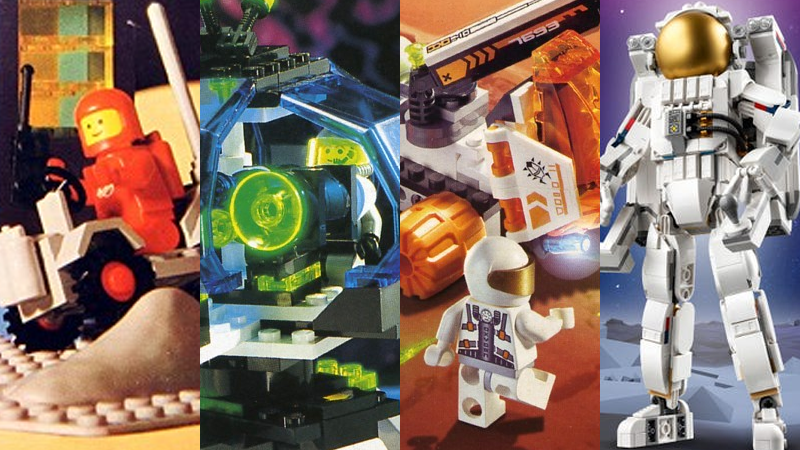
When you think of space and Lego these days, you’d be forgiven for immediately going to one of the most important and influential lines in the toymaker’s vast arsenal: Star Wars. But although Lego and the galaxy far, far away are celebrating 25 years of brick-building partnership this year, Lego’s fascination with the stars goes well beyond licensed sci-fi.
Space has shaped Lego’s ambitions as its transformed into one of the biggest toys on the planet—from its early days, to the formation of the iconic Space sub theme in the 1980s, and beyond into the ‘90s diversification and the theme’s quiet withdrawal as Star Wars inspired Lego’s branding rush. But in recent years Space has crept back into Lego in fits and starts—and is maybe ready for a resurgence it hasn’t had in a long time.
All images via Brickset.
Space Before Space
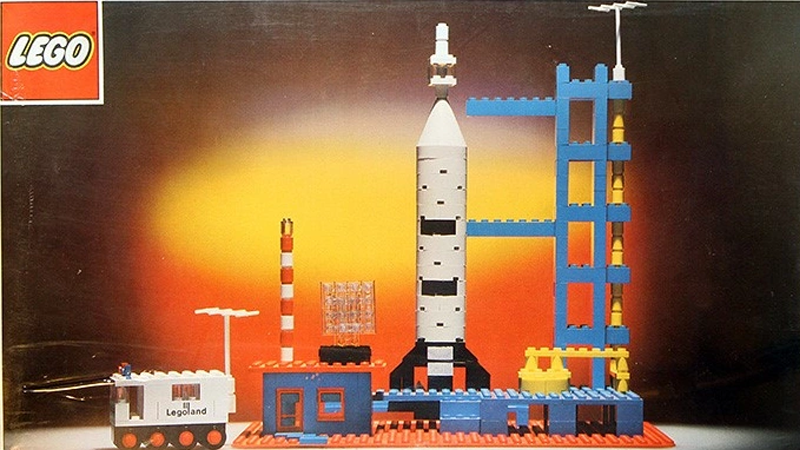
Although it would take a few more years to solidify into a specific subset of its plans, Lego’s flirtation with space exploration began in the early 1970s. The first Lego Space Rocket set was made available in 1964, but it was the 1973 Rocket Base and 1975 Moon Landing—the latter with three brick-built astronauts, in the era before the minifigure was first developed—that really set the stage for Lego’s plans in space. They also established a very important thing that we’ll see throughout the next four decades of Lego Space: blue is very much this theme’s color.
Classic Space Begins
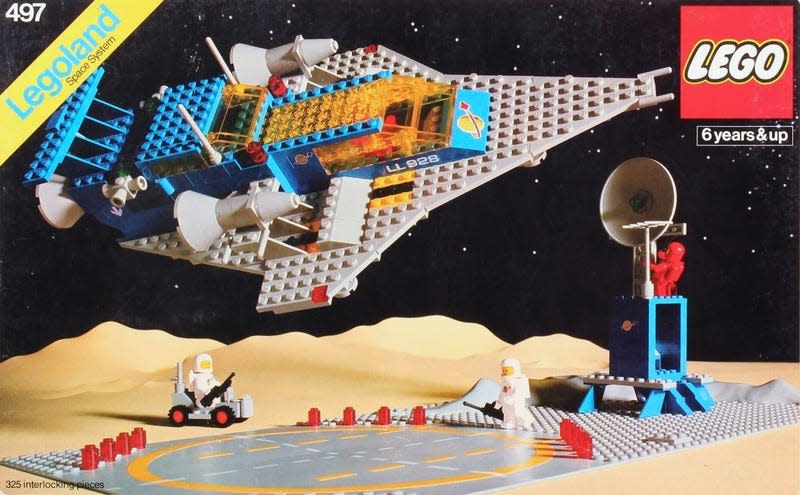
The first minifigure as we now know it emerged in 1978—and along with it, the formation of some of Lego’s most enduring sub-themes, including Town (now City), Castle (now a wider, but still sparse, Medieval brand), and, of course, Space. The first Space sets came with the iconic astronaut minifigures that would define the Space branding, but in white and red—and the little Space logo of a rocket ship circling a planet that has been the hallmark of Classic Space ever since. Although Blue was a consistent color element of Space sets, early on the era established a pairing that would burn into the minds of kids for generations beyond as the definitive Lego sci-fi color: a cool grey that formed a major part of the line’s trademark angular flying vehicles and ground rovers.
A Shift in Color
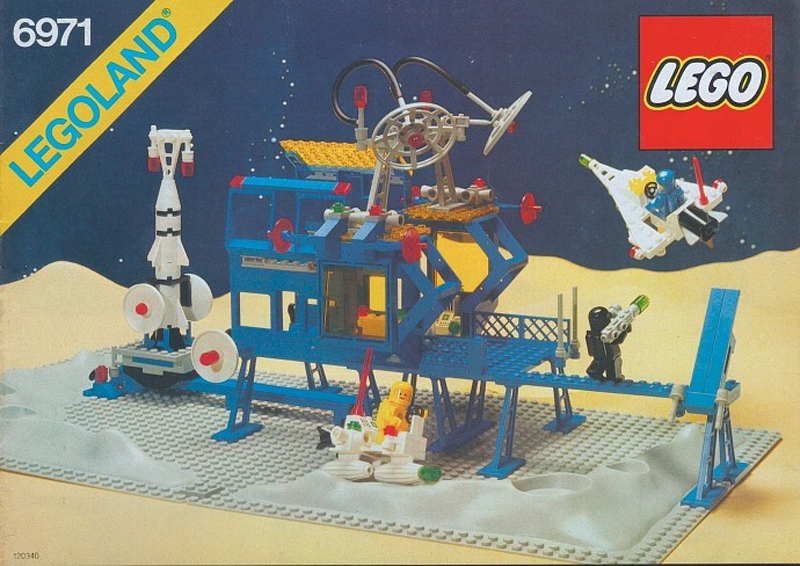
During the mid-‘80s, the Space line evolved with more unique parts, and brought in more colors to shift and diversify the sets available. New astronaut figures were added in black and blue, and Lego sought to solve some of the problems of earlier minifigures—mainly that the chinstraps of their helmet visors were so thin and small they would easily snap—by introducing an updated helmet design.
In the sets themselves, a lot of the grey that defined the look of early Space vehicles gave way to white and blue. The change heralded something much bigger coming at the tail end of the 1980s...
Futuron, Blacktron, and Factions
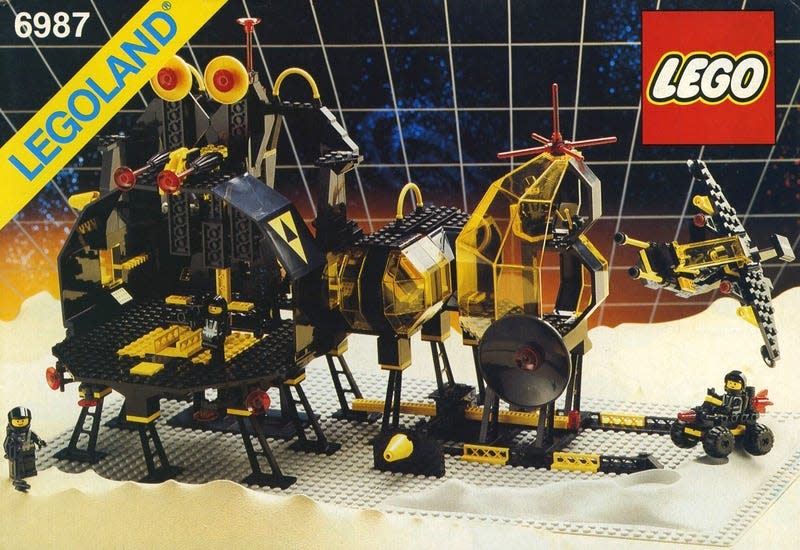
Up to this point, Lego’s Space theme didn’t have a narrative of its own. The point was for kids themselves to imagine scenarios, but Lego presented the sets as loosely themed around the idea of exploration—although clearly science fictional rather than rooted in then-contemporary space exploration ideas, these vehicles weren’t conflict-driven, but research and exploration-focused. That changed in 1987, when Lego debuted the first factions in the Space line: its evolution into two dueling space themes: Futuron and Blacktron.
Futuron retained much of the original mission of latter days of Classic Space, including its white and blue color scheme for its vehicles. Blacktron, meanwhile, as the name implies, went for predominantly black designs with yellow accents, and featured vehicles and bases that looked and felt more aggressive. Blacktron is one of the first explicitly villainous factions Lego ever introduced, and set the stage for the definition of what Lego Space would become throughout the 1990s.
The Next Generation
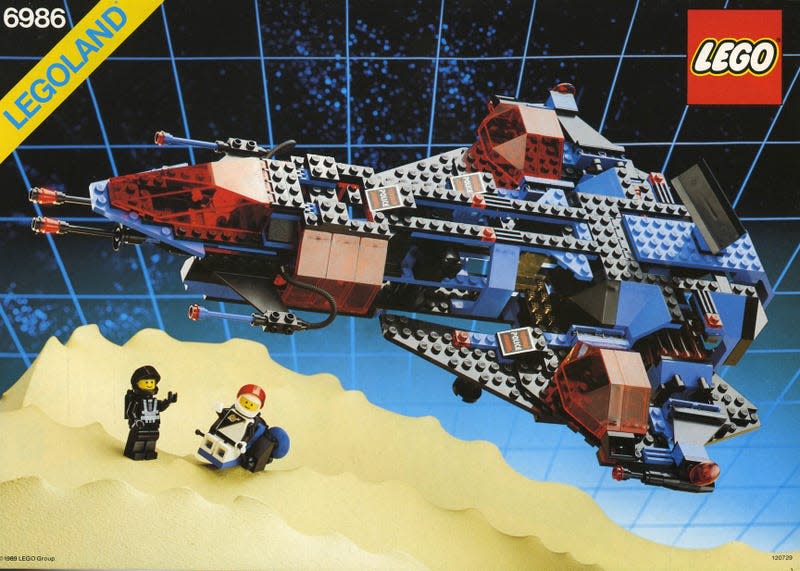
Where Blacktron went, the Space Police followed a year later in 1989, setting the stage for what would eventually become a three-way mishmash of ideological factions in Lego’s evolving Space series: heroes, villains, and a mid-way civilian exploration faction. This trend continued throughout the ‘90s as Lego regularly cycled new factions and storytelling in and out of the Space series. Futuron gave way to M:Tron, which itself evolved into the snowy explorers of Ice Planet 2003—while new generations of Space Force and Blacktron evolved their cops-and-robbers-in-space conflict, before giving away to entirely new factions like Spyrius and Unitron.
Aliens Attack
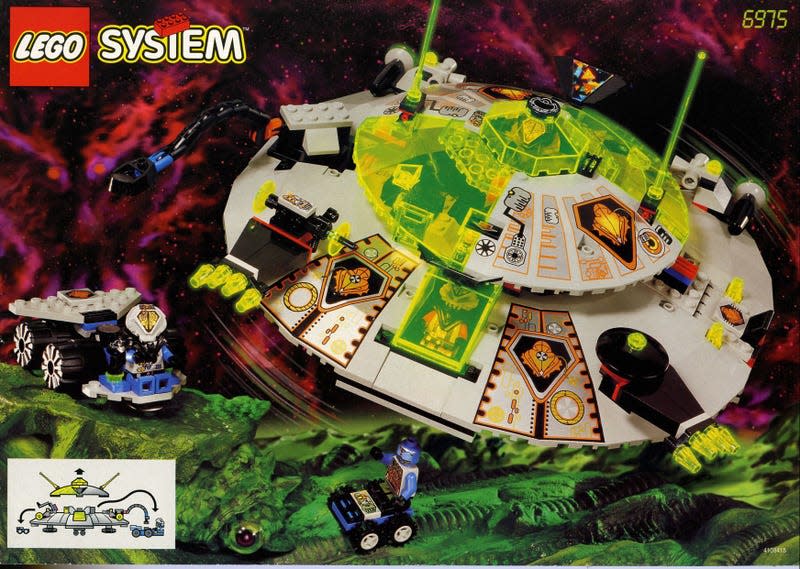
As the ‘90s and Lego’s approach to factional conflict continued, Space evolved beyond human-vs-human stories. After introducing robotic characters the year prior in the Exploriens line, in 1997 Roboforce introduced even more android figures. Shortly after, the launch of UFO and then Insectoids introduced the first non-humanoid alien minifigures, bringing in advanced design techniques like large piece to replicate classic sci-fi curvatures or, as Insectoids implies, bug-like design themes.
But this is an important era in Lego Space for an altogether different reason, too. At the tail end of the ‘90s, Lego announced an unprecedented move: its first line of licensed playsets, based on a series ready to undergo its own transformation for a new generation. With a humble little 263-piece X-Wing Starfighter releasing in October 1999, Lego Star Wars was here, and nothing would be the same.
The Red Planet Beckons
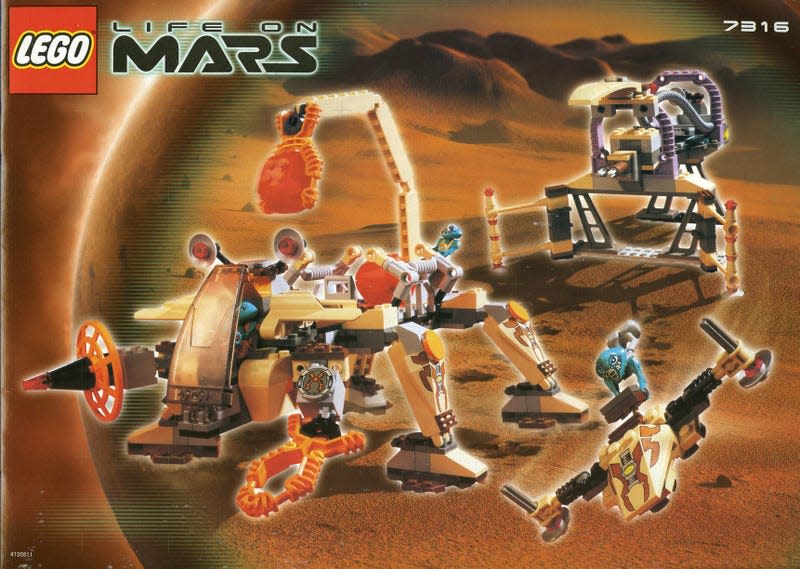
In the early aughts—and with Star Wars accelerating the company to even higher highs—Lego realigned Space back away from, well, wars in the stars. The first original Space theme of the 21st century was Life on Mars, which imagined a future colonization of the planet by co-existent humans—using the classic white and blue coloration of Space’s prior “good guy” factions—and native Martians. A few years later, the Lego-branded Discovery line brought things back to our own world with sets inspired by real-world space exploration initiatives, like the ISS and Mars Rover programs.
Although Life on Mars wouldn’t last, six years later Lego returned to the idea with Mars Mission—except this time, once again, things were explicitly confrontational, with humanity and invading aliens battling over the red planet.
The End of an Era
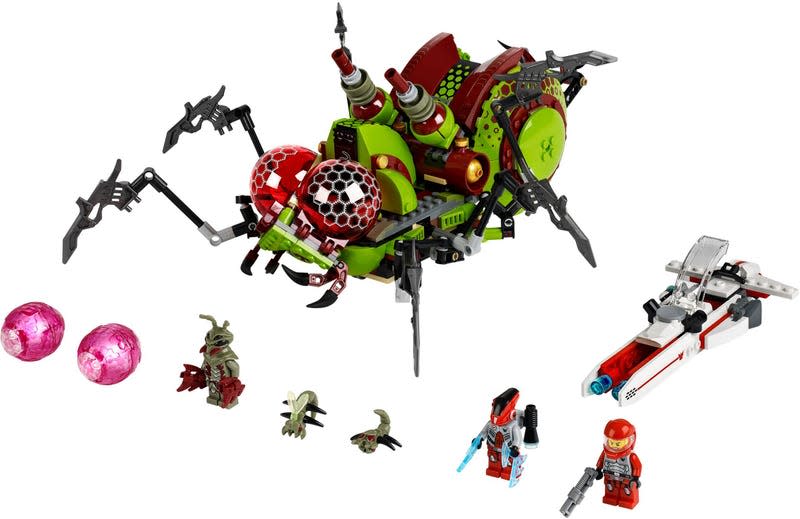
Mars Mission represented the beginning of the end for regular sci-fi Lego lines outside of licensed themes. The return of Space Police in 2009 re-imagined the faction as fighting back against alien threats instead of spies and robbers, while succeeding series like Alien Conquest and Galaxy Squad re-affirmed the humans vs. aliens conflict as key parts of Lego’s Space plans.
The exploratory, more realistic rendition of Lego Space would continue, but not in its own line: it would become a key subtheme in what was now Lego City, beginning in 2011 as a regular, rotating wave theme.
Spaceship, Spaceship, SPACESHIP!

An unlikely source would bring back a nostalgia for Classic Space: Charlie Day’s breakout character in the 2014 surprise smash hit Lego Movie, Benny. A throwback minifigure to Space’s early days—right down to the broken helmet chinstrap—Benny’s important role in the climax of the film to build his dream spaceship to help the rest of the heroes paved the way for a set based on the scene, a love letter to the angular shapes, greebles, and blue-and-grey color scheme of the original Space sets.
Down to Earth
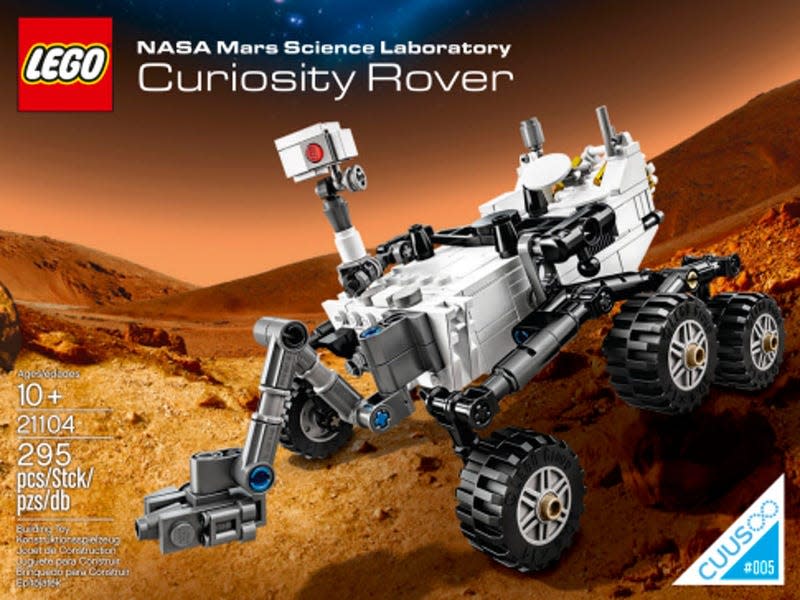
At the same time, Lego’s focus for Space sets moved back away from original stories, and instead to a focus on real-world science initiatives. The community-support series Lego Ideas (formerly Lego Cuusoo) introduced sets in the mid 2010s inspired by real life programs like JAXA’s Hayabusa craft, or NASA’s Curiosity rover—and even an early Classic Space-inspired Exosuit to boot.
Meanwhile, other Lego themes continued to explore real-world space exploration too. Beyond Lego City’s regular rotation of Space-themed sets, the Creator line has released its own space shuttle and rover sets in recent years—while its own Creator Expert sub-line has given adult builders advanced projects like the Lunar Lander or the Space Shuttle Discovery.
A Play to Nostalgia
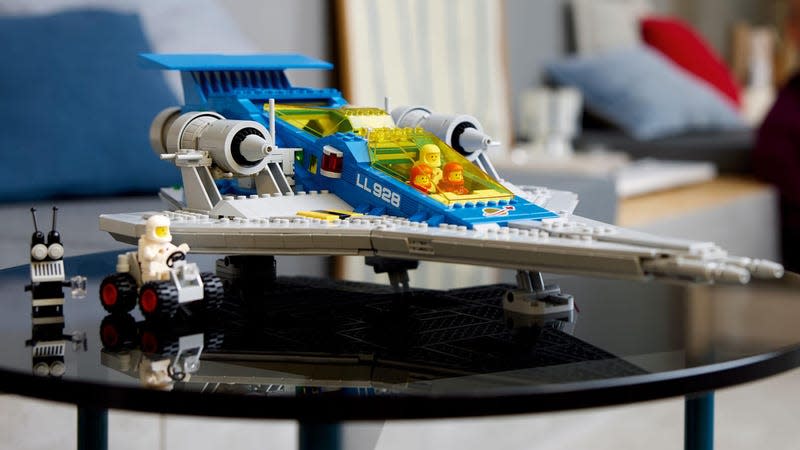
In 2022, Lego celebrated its 90th anniversary with a special series of sets recreating classic sets from its past—and of course Space got some representation in the form of the Galaxy Explorer, a faithful upgrade to the set of the same name from 1979. Aside from the Lego Movie and its sequels’ nods in their own sets, it was the first time in decades Lego had released a Classic Space set—but not the last time the company would leverage the name...
The Future?
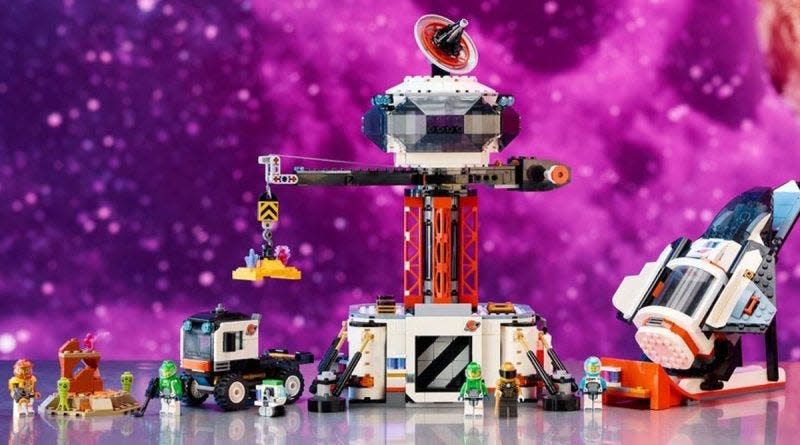
In 2024, Space is back—but not as its own sub-theme. Now, Space and its iconic logo can be found across a wide variety of Lego’s original lines, from stalwarts like City, Technic, and Creator, to the minidolls-focused Friends series or the new original series DREAMZzz, an array of space-exploration-themed sets have trickled out across the toymaker’s offerings. As Lego Star Wars celebrates 25 years, Lego Space is back and stronger than it has been in quite some time—even if it’s not just standing on its own two feet anymore, it’s become, once again, a key part of Lego’s plans.

